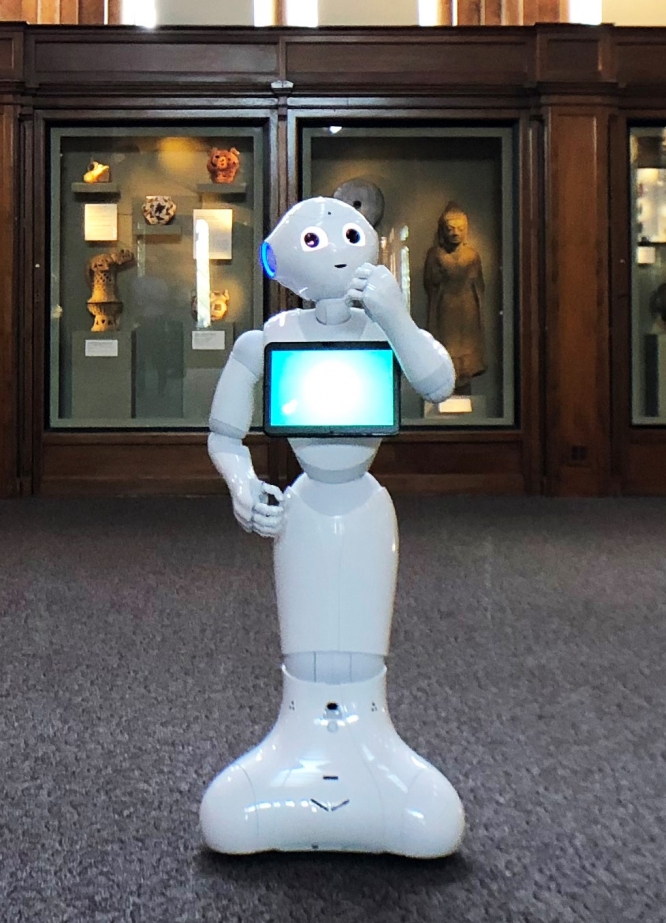
Pushy Pepper robots take over Smithsonian Museum hosting jobs
A contingent of pushy Pepper robots – a small humanoid robot produced by SoftBank Robotics – has taken over the Smithsonian Museum’s hosting jobs.
The Pepper robots have already taken up their positions and are all set to meet and greet and be robotically cheerful for visitors to what is perhaps the world’s most famous museum chain.
The innocuous-looking but potentially job-stealing Pepper units were all donated by SoftBank as part of a pilot project.
Starting any day now, visitors to some Smithsonian museums may find themselves greeted by the four-foot-tall, wide-eyed and slightly eery-looking Pepper robot.
Humanoid Pepper robots have been deployed in six Smithsonian spaces in an experimental program to test how robot technology can enhance visitor experiences and educational offerings.

The Smithsonian is the first museum complex to explore using Pepper robots, which are designed to sense when people are close by and engage them in conversation.
The pilot projects in this program are engineered to help the Smithsonian learn more about how a novel interactive experience like Pepper can help solve common problems in its museums and research centers.
These include attracting people to under-attended galleries, encouraging deeper and more customized visitor engagement with artwork and artifacts, and giving docents and educators new tools to engage and delight visitors.
For example, at the National Museum of African Art, Pepper will translate Kiswahilli phrases in its upcoming World on the Horizon exhibit.
The galleries in the Hirshhorn Museum and Sculpture Garden will host Peppers that are programmed to increase interaction between visitors and docents, while its teen educational space ARTLAB+ will use the robots to teach students coding and software engineering.
Meanwhile at the National Museum of African American History and Culture, Pepper will help attract and orient visitors to the Rosa Parks virtual-reality experience.
The Pepper robots were donated to the Smithsonian as part of a significant gift by Softbank Robotics, a worldwide leader in humanoid robots.
Softbank robots are widely used in educational and commercial environments throughout Asia and have recently been introduced in the United States. They are used in airports, shopping malls and college campuses to aid in wayfinding and customer service.
Pepper can answer commonly asked questions or tell stories, using voice and gesture as well as an interactive touchscreen.
Pepper also dances, plays games and poses for selfies, offering a playful experience that often attracts a crowd.
Rachel Goslins, director of the Smithsonian Arts and Industry Building, who is spearheading the program, says: “When you meet Pepper, you can’t help but smile.
“We’re eager to experiment with how Pepper can help us support docents and educators in the vital work they do while providing a fun and surprising experience for the millions of children and adults who visit us each year.”
Steve Carlin, chief strategy officer of Softbank Robotics, says: “We’ve seen how Pepper’s technology can completely transform consumer experiences in different types of environments.
“By interacting with museum visitors and providing insight on different exhibits, Pepper will help guide their educational experience through the Smithsonian that they otherwise might have missed out on.
“We’re thrilled to donate Pepper to Smithsonian locations, and look forward to seeing just how Pepper brings impactful change to the museum experience.”
Visitors looking to interact with Pepper will find the robot in the National Museum of African American History and Culture, Hirshhorn Museum and Sculpture Garden, the Smithsonian Castle, National Museum of African Art and the Smithsonian Environmental Research Center.
